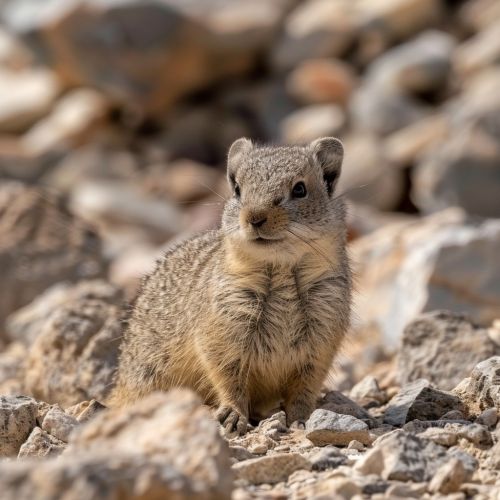Pika
Taxonomy and Description
The pika is a small mammal, with short limbs, rounded ears, and no external tail. They are part of the Ochotonidae family within the order of lagomorphs, which also includes rabbits and hares. The name "pika" is derived from the Siberian name for this animal, "puka".


There are approximately 30 species of pika, which are divided into two genera. The genus Ochotona is found in Asia and North America, while the genus Prolagus is found in Europe. Pikas are native to cold climates, most commonly in mountainous regions, but are also found in rocky areas in the deserts of Asia.
Physiology and Adaptations
Pikas have a body length of 15 to 23 centimeters, and a weight of 170 to 300 grams. Their fur is long and soft, and is generally gray or brown in color, although this can vary depending on the species. Pikas have large, rounded ears, and bright, black eyes. They have short limbs, which are powerful for their size, and are used for climbing and jumping among rocks.
Pikas have several adaptations that allow them to survive in cold climates. They have a high metabolic rate, which helps to generate body heat, and their dense fur provides insulation. Pikas also have a large nasal cavity, which warms the cold air before it reaches the lungs.
Behavior and Ecology
Pikas are generally solitary animals, although they will live in close proximity to other pikas in a colony. They are diurnal, meaning they are active during the day, and spend their time foraging for food, which consists of a variety of plants, including grasses, leaves, and twigs.
Pikas have a unique behavior known as "haystacking", in which they collect and store food for the winter. They create piles of vegetation, which are left to dry in the sun, and then stored in crevices among the rocks. This behavior is essential for their survival, as pikas do not hibernate, and need a food source during the winter months.
Pikas are preyed upon by a variety of predators, including birds of prey, weasels, and foxes. When threatened, pikas will emit a high-pitched alarm call to warn other pikas in the colony.
Reproduction and Lifespan
Pika breeding season occurs in the spring, and females can have one to two litters per year, with an average of two to four offspring per litter. The gestation period is approximately 30 days, and the young are born fully furred and with their eyes open. They are weaned at around one month of age.
The average lifespan of a pika in the wild is around six years, although some individuals have been known to live up to seven years. In captivity, pikas can live up to eight years.
Conservation Status and Threats
Many species of pika are considered to be of least concern by the IUCN, although there are some species that are listed as vulnerable or endangered. The main threats to pikas are habitat loss, due to human activity and climate change, and predation.
Pikas are particularly sensitive to changes in temperature, and as such, are considered to be an indicator species for climate change. As temperatures rise, pikas are forced to move to higher elevations in search of cooler temperatures, which can result in a loss of habitat.
